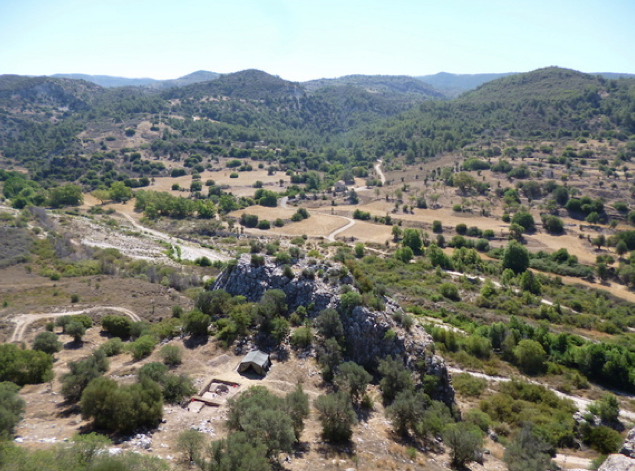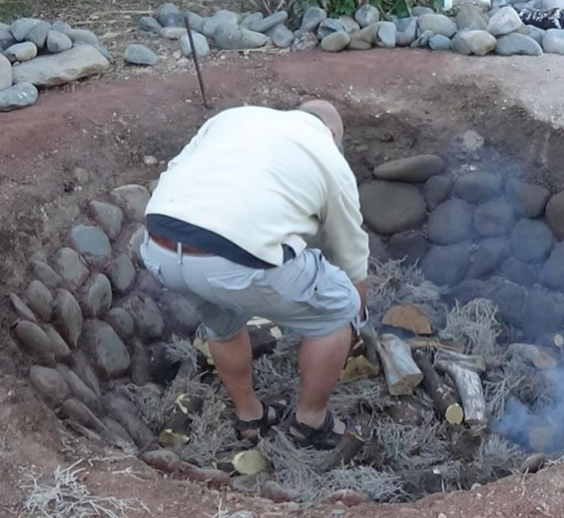Just in time for the holiday feasting season, learn about the discovery of an ancient pit and the experimental archaeological project that followed to recreate a Neolithic feast. Could our feasts be the result of one of humankind’s greatest inventions?
Few things define us as humans as does the food we eat and its preparation. Scientists theorize that sitting around the campfire, feasting together, enabled the human brain to expand beyond “What’s for dinner?”
A 9,000-year-old barbecue pit was discovered at Prastio Mesorotsos, a site in the Diarizos Valley outside of Paphos on the Mediterranean island of Cyprus, which has been almost continuously occupied from the Neolithic era to the present.

It took three years of excavations before archaeologists from the University of Edinburgh got to the bottom of the stone-lined, ash-covered pit, and only last summer could they say with some certainty that they were looking at an ancient oven. But the pit was so big — about 8 feet (2.5 meters) across and 3 feet (1 meter) deep — that Andrew McCarthy, director of the expedition, wasn’t sure if cooking in it would actually work.

This past summer, in the spirit of the Stone Age, archaeologists recreated a prehistoric pit feast — feeding 200 people with pig and goat, slow-roasted underground — to test the cooking methods of Neolithic chefs in a replica of the fire pit. “I think it’s probably the closest to the theoretical maximum that a pit oven of this type could be,” McCarthy told Live Science, referring to the fact that too big of a space would’ve taken too much energy to keep hot enough. “It was kind of at the limits of what’s possible. After we reported on what was found, we decided that the best thing to do would be to test our hypothesis.”


Learn the results of their experiment and the story of a gargantuan feast at the talk Fire Masters: Cooking & Feasting 10,000 Years Ago this coming Tuesday, at 6:30 pm., November 17, 2015 at the Houston Museum of Natural Science.
Perhaps sitting next to your Uncle Harold and listening to his stories at the upcoming Thanksgiving dinner is part of a long line of dining and feasting that stretches back through the ages. Did cooking and feasting help bring about advances in civilization?
Photos courtesy of Prof. Andrew McCarthy
Reblogged this on From the Trenches Blog.